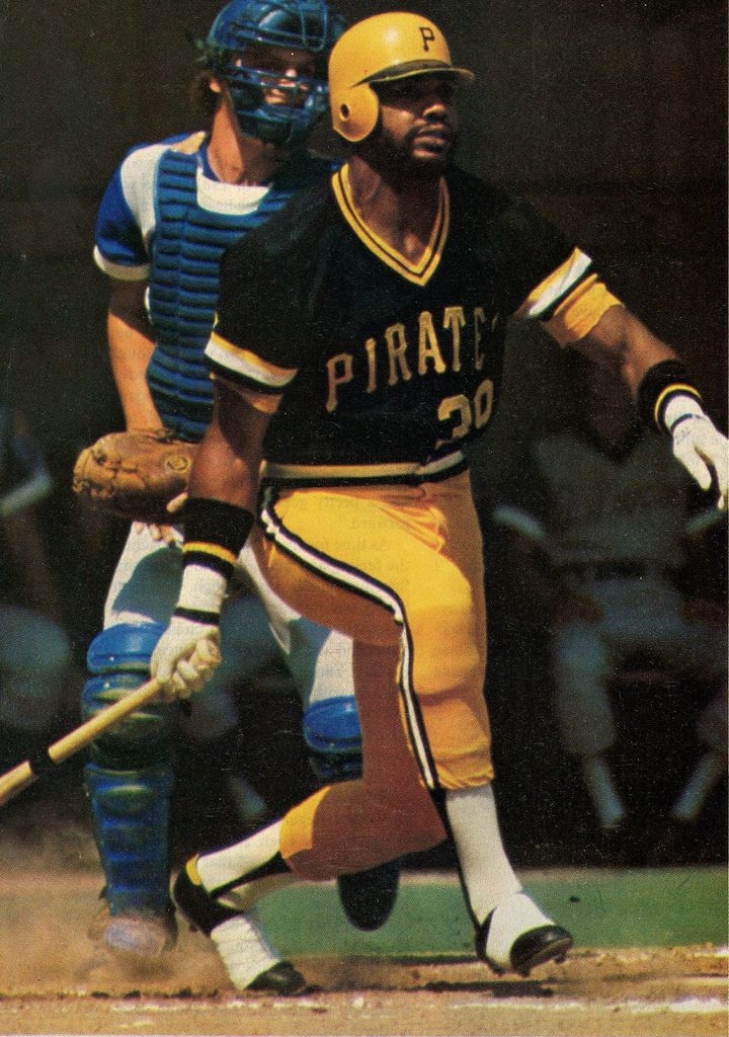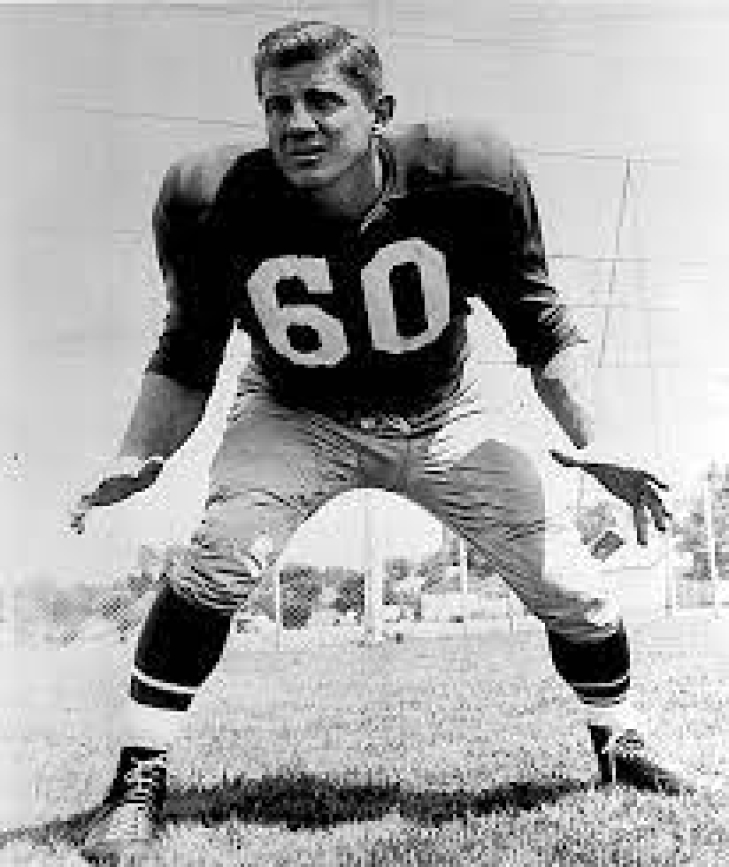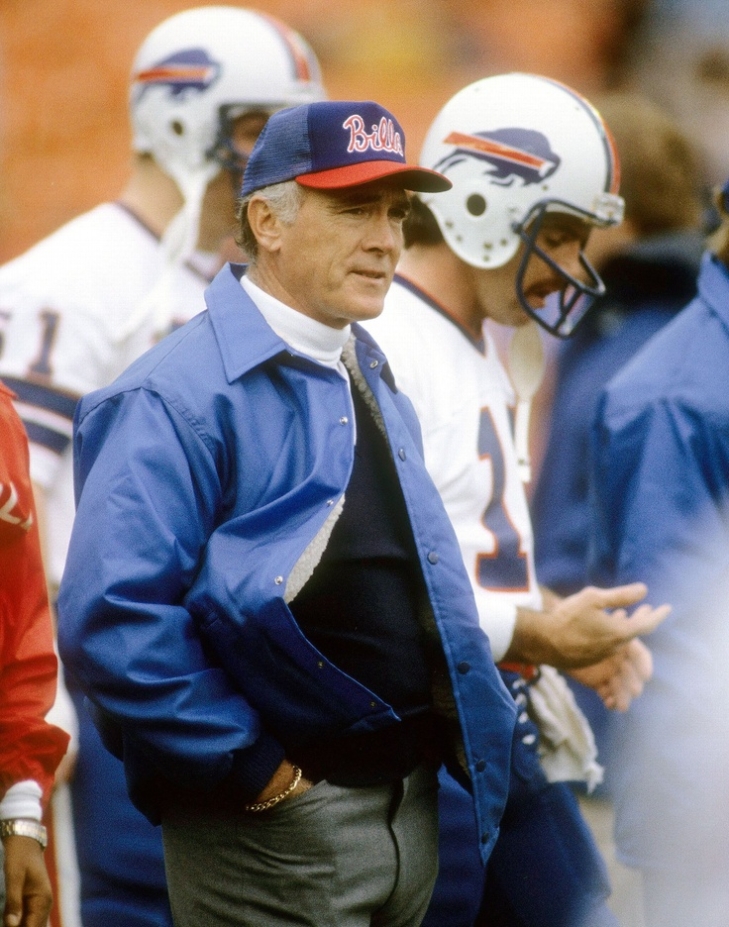
Committee Chairman
The Baseball Hall of Fame announces the Classic Era Candidates
The Classic Baseball Era, which consists of the period to 1980 (including the Negro Leagues), has announced its eight Finalists for the Baseball Hall of Fame Class of 2025.
The nominees are:
Dick Allen: Here is Allen again, and fans and family of the late slugger must be tired of waiting. Allen was on the Writer’s Ballot for 15 years, peaking at 18.9% in 1996, his fourteenth year. As for the Veterans ballot, this is his sixth try, with him falling short by one vote in his last two tries (2015 and 2022).
Allen was the 1972 American League MVP (with Chicago). Over a 15-year career, he hit 351 Home Runs with 1,119 RBIs. He was also a seven-time All-Star, two-time OBP leader, three-time Slugging Champion, and four-time leader in OPS.
Ken Boyer: Boyer was also on the Writer’s Ballot for 15 years, with his apex coming in 1988 (his ninth ballot) with 25.5 percent of the vote. Like Allen, he has been on six Veterans ballots but has never come close to achieving the 75% required.
An 11-time All-Star and five-time Gold Glove winner, Boyer won the 1964 National League MVP and led his Cardinals to a World Series Championship that year. He had 2,143 hits, 282 home runs, and 1141 RBIs.
John Donaldson: Donaldson received 50% of the vote on the 2022 Veterans ballot, boding well for his chances this year.
While Donaldson played in the Negro Leagues in the first half of the 1920s with the Kansas City Monarchs, his best years were in the pre-Negro Leagues era. Overall, the Pitcher is believed to have a record of 424-169-15, 5,221 Strikeouts, and an ERA of 1.37.
Steve Garvey: Garvey lasted 15 years on the writer’s ballot, with his peak coming in year three at 42.6 percent. He appeared on four Veteran’s Ballots, with a 37.5% finish on the 2020 version.
Garvey won the 1974 National League MVP, was a 10-time All-Star, four-time Gold Glove winner, and helped the Dodgers win the 1981 World Series. He had 2,599 Hits, 272 Home Runs and 1,308 RBIs.
Vic Harris: Harris netted 62.5% on his first Veteran’s Ballot in 2022, two votes shy of what he needed for induction.
Harris was a seven-time Negro League All-Star and a long-time Manager who boasted a winning record of 547-278. He overall won none Negro League Pennants and three Negro League World Series Championships.
Tommy John: John was on the Writer’s Ballot for 15 years, with his final year reaching his peak of 31.7%. He has been on the Veteran’s Ballot four times before but never received enough votes to register.
A four-time All-Star. John had a career record of 288-231 with 2,245 Strikeouts and was a Cy Young runner-up twice.
Dave Parker: Parker was on 15 Writer’s Ballots and finished as high as 24.5% in his second year. He has been on three Veteran’s Ballots and had 43.8% on his 2020 attempt.
Parker led Pittsburgh to a World Series Championship in 1979 and won a second ring a decade later with Oakland. A six-time All-Star with three Silver Sluggers, Parker won the 1978 National League MVP. He had 339 career Home Runs and 1,493 RBIs.
Luis Tiant: Tiant was on 15 Writer’s Ballots, peaking with 17.2 in his 14th attempt. He has been on six Veterans ballots, but only received 25 percent once, and in his last three attempts, did not get enough votes to register.
The recently deceased Pitcher is an iconic figure in Boston, helping them win the 1975 American League Pennant, though his best year in baseball was in Cleveland (1968: 21-9, 1.60 ERA & 264 SO). Tiant was a three-time All-Star with a career record of 229-172 and 2,416 Strikeouts.
The results will be announced on December 8 at 7:30 PM.
The Pro Football Hall of Fame Revisited Project: 1968 Final VOTE
1968 Pro Football Hall of Fame Revisited Project Class.
Here we are! Again!!
If you have been following our Pro Football Hall of Fame Revisited Project, you know we have asked the rhetorical question: What if the PFHOF began in January 1946?
After soliciting and obtaining a passionate group of football fans and historians, we sent out a ballot for a Preliminary Vote, in which we asked each voter to give us 25 names as their semi-finalists and 5 in the Senior Pool. We then asked the group to vote for their 15 Finalists in the Modern Era and 3 in the Senior Category. The final stage was to vote for their five Modern Era inductee and one Senior inductee.
This is the result of the 23rd official class;
Below are the final results of this project based on 32 votes,
Remember that the group took a vote in “1966”, and we have reverted back to the top five candidates entering the Hall PROVIDING THEY MAKE 50% of the vote. This will be put to a vote again in “1969”.
This is for the “Modern Era”
*Bold indicates they have been elected to the Pro Football Hall of Fame Revisited Class of 1968:
|
Player |
Year of Eligibility |
Vote Total |
|
Chuck Bednarik LB-C |
1 |
28 |
|
Bobby Layne QB |
1 |
24 |
|
Bobby Dillon S |
4 |
17 |
|
Billy Wilson E-FL |
3 |
11 |
|
Alan Ameche FB |
2 |
10 |
|
Charlie Conerly QB |
2 |
9 |
|
Ward Cuff WB-QB-HB |
16 |
8 |
|
Mike McCormack |
1 |
8 |
|
Bill Osmanski FB |
16 |
6 |
|
Marshall Goldberg FB |
15 |
5 |
|
Pat Harder FB |
10 |
5 |
|
Buckets Goldenberg G-BB |
18 |
4 |
|
Gene Lipscomb DT |
1 |
4 |
|
Tank Younger FB-LB-HB |
5 |
2 |
|
Bruno Banduccii G |
9 |
1 |
This is for the “Senior Era”,
*Bold indicates they have been elected to the Pro Football Hall of Fame Revisited Class of 1968.
|
George Christensen |
5 |
10 |
|
Ace Gutkowski |
4 |
8 |
|
Al Nesser |
11 |
6 |
|
None of the Above |
N/A |
7 |
About the 1968 Inductees:
Chuck Bednarik LB-C, PHI 1949-62: Inducted in the Pro Football Hall of Fame Revisited Project in 1968 on his 1st Ballot. Inducted into the actual Pro Football Hall of Fame in 1967.
The first name that should come to the mind in Philadelphia when it comes to football legends has to be Chuck Bednarik, who was considered the last Ironman of football as he played both ways, Center and Linebacker, and was among the best in the 1950s at both.
Bednarik was the first overall pick in the 1949 Draft, and he did not have to travel far, as he was a two-time All-American from Penn. Bednarik, who was exemplary at Center, made his mark at Linebacker with hits that rocked opponents to their core and struck fear in any offensive player. The six-time First Team All-Pro was the heart and soul of the Philadelphia Eagles team (the only team he ever played for) that won the 1960 NFL Championship.
Amusingly, Bednarik’s nickname of “Concrete Charlie” came from his off-season job as a concrete salesman and not from his hits. That moniker proved to be one of the most appropriate ones in football.
Bobby Layne QB, CHI 1948, NYB 1949, DET 1950-58 & PIT 1958-62: Inducted in the Pro Football Hall of Fame Revisited Project in 1968 on his first Ballot. Inducted into the actual Pro Football Hall of Fame in 1967.
A bust for both the Chicago Bears and New York Yankees, Bobby Layne quarterbacked the Lions to three NFL Championships in the 1950s and is currently the only pure QB from the Lions in the Pro Football Hall of Fame. A two-time Passing Yards leader, Layne was known for his grit, being one of the last players to wear face bars on his helmet.
Detroit was never the same after he traded, and many older fans likely still claim the trade of Bobby Layne took them to the decades-long slump they are only now coming out of.
Bobby Dillon, DB, GNB 1952-59. Inducted into the Pro Football Hall of Fame Revisited Project in 1968 on his 4th Ballot. Inducted into the actual Pro Football Hall of Fame in 2020.
Bobby Dillon’s career spanned only eight years, but they were all spent with the Green Bay Packers. The 94 games he put on the cleats with Green Bay were enough for him to set (and still hold) the franchise record for interceptions. Dillon would also be named a First Team All-Pro in four of his eight seasons.
It's not a bad career for someone alleged to have only one working eye.
The Pro Football Hall of Fame announces the nine Semi-Finalist Coaches for the 2025 Class
The Pro Football Hall of Fame has named nine Coaching Semi-Finalists, which has been reduced from a group of 12 that was previously cut down from a group of 14.
This Pro Football Hall of Fame Coaches Committee will meet virtually on November 19, putting forth one Finalist for the Full Selection Committee.
The Semi-Finalists are:
Bill Arnsberger. Arnsberger is one of the most heralded defensive minds in NFL history, first working for the Baltimore Colts (1964-69) where his defense brought the Colts to Super Bowl III. He would join his Cots Coach, Don Shula, to Miami, where his “No-Name Defense” led the Dolphins to back-to-back Super Bowl wins. He took a shot as a Head Coach with the New York Giants, but after that failed, he returned to Shula and built up another potent defense (The Killer B’s) that won another AFC Title. Afterward, he went to LSU, then Florida, and returned to the NFL with the San Diego Chargers, where again, as the Defensive Coordinator, he helped the Bolts make their first Super Bowl.
Tom Coughlin: Coughlin worked his way up the ranks and became the Head Coach of the expansion Jacksonville Jaguars in 1995. He was their Head Coach for eight years, bringing them to two AFC Championship Games, the first of which was in the franchise’s second year. After being fired, he joined the New York Giants, where the stoic leader led the G-Men to two Super Bowl wins (XLII & XLVI). He retired with an overall record of 170-150 and is already a member of the New York Giants Ring of Honor and Pride of the Jaguars.
Mike Holmgren. Holmgren won two Super Bowls with San Francisco, first as a Quarterbacks Coach and then as their Offensive Coordinator, and it propelled him to the Head Coaching job at Green Bay in 1992. He led the Packers to a Super Bowl win at SBXXXI. Holmgren accepted the Seattle Seahawks coaching job and took them to a Super Bowl appearance in 2005. A member of the Green Bay Packers Hall of Fame and Seattle Seahawks Ring of Honor, Holmgren had a career record of 161-111.
Chuck Knox: An Offensive Line Coach with the New York Jets (1963-66) and for Detroit (1967-72), Knox was elevated to the Head Coach for the Los Angeles Rams in 1973, where he won the AP Coach of the Year as a rookie. He later coached Buffalo (1978-82) and Seattle (1983-91), where he won Coach of the Year Awards for both clubs, and he concluded his career three years back for the Rams. He had an overall record of 186-147.
Dan Reeves. Reeves won a Super Bowl as an Assistant Coach in Dallas and was hired by Denver as their Head Coach in 1981. He led the Broncos to three AFC Titles but could not punch their ticket into a Super Bowl win. After he was let go by Denver, he signed with the Giants and won the 1993 AP Coach of the Year. Later, he took over as Atlanta’s Head Coach, leading them to their first Super Bowl appearance, a loss to his former team (Denver), though he did win his second Coach of the Year. He had an overall record of 190-165-2 and is a Broncos Ring of Honor member.
Marty Schottenheimer. Working his way through the Giants and Lions as the Linebackers Coach, Schottenheimer landed the Defensive Coordinator job in Cleveland in 1980 and was promoted to their Head Coach in 1984. He brought Cleveland to the AFC Finals twice but left for Kansas City in 1989 with another (unsuccessful) trip to the AFC Championship Game (1993). Schottenheimer took some time off and was lured back by Washington, but that lasted only one year. He returned for the San Diego Chargers the season after, where he twice took them to the playoffs. He had an overall record of 200-126-1 and is a member of the Kansas City Chiefs Hall of Fame.
George Seifert. Seifert joined the San Francisco 49ers as their Defensive Backs Coach in 1980 and was elevated to Defensive Coordinator in 1983. He won three Super Bowls as an assistant, and in 1989, he was again promoted to Head Coach. Here, he led the Niners to two more Super Bowl wins and to five NFC Championships Games overall. He concluded his career with three years as Carolina’s Head Coach and had an overall record of 114-62.
Mika Shanahan. Shanahan joined Denver as their Wide Receivers Coach in 1984, and a year later, he began a three-year stint as their Offensive Coordinator, where he caught the eye of Raiders owner Al Davis, who hired him to replace Tom Flores. That did not last long, and he was back in Denver but was let go due to a dispute between Quarterback John Elway and Dan Reeves. He went to San Francisco, where he won Super Bowl XXIX as their Offensive Coordinator, and he returned to Denver again in 1995, this time on a 14-year run where he took the Broncos to their first two Super Bowl wins (XXXII & XXXIII). He finished his career with three years at Washington and had an overall record of 170-138. He is also a member of the Broncos Ring of Fame.
Clark Shaughnessy. Arguably one of the first great Assistant Coaches in NFL history, Shaughnessy was a very successful college coach (150-117-17) and became the Washington Redskins Advisor in 1944. He later was the Head Coach for the Rams for two years and served as Chicago’s Defensive Coordinator from 1951 to 1962.
Jeff Fisher, Alex Gibbs, and Richie Petitbon were eliminated.
We congratulate the candidates who have made it to this stage.
Sports Halls of Fame Collaborations with Betting Companies: A New Era of Fan Engagement
The rise of sports betting is reshaping how fans engage with the games, teams and athletes they love. And that, in turn, is ushering in a new era of sports halls of fame. Formerly hallowed halls meant to celebrate athletic excellence, sports industry halls of fame are increasingly partnering with betting companies as they attempt to drive visitor and viewership traffic — relishing in the endless possibilities generated by a new generation of fans who value digital experience over legacy brand appeals. What kind of opportunities might it create, such as literally strolling through milestone events in history, unlocking memorabilia previously not available to public viewing or potentially even probability-based events focusing on Hall of Fame Achievements? In addition to that, platforms like Sportscasting. com does a great job of connecting sports fans to these fresh experiences and maintaining the extension between sports betting and legacy.
1. Bridging the Gap: Honoring History Through Interactive Experiences
Halls of fame from Cooperstown to Canton have traditionally served the purpose of preserving and showcasing the legacies of elite athletes. Now, with sports betting in a period of rapid growth, these institutions are reimagining fan engagement through a new generation of history brought to life by interactive betting partnerships. This would involve being able to see those eternal sports moments in another dimension, such as betting on a simulation or replay of famous games or getting the results of virtual leagues based on Hall of Fame moments. A gambling site would feature "odds," for example, on virtual matches between historic players or predict outcomes based on famous plays. It is this combination of tradition and modernity, really, that appeals to the traditional sports fan and to the modernist betting enthusiasts a little of the best of both worlds.
2. Sportscasting.com and the Role of Comprehensive Sports Analysis
Sites like Sportscasting.com flex the muscles of data analytics in sports, connecting fans with a major development that bridges the gap from yesteryear to modern times. By deeply analyzing players' statistics, the outcome of games, and even the odds of betting on a game, Sportscasting.com, which can be found here https://www.sportscasting.com/betting-sites/california/, equips the fans with valuable tidbits on everything from football and basketball to less-covered sports. For instance, readers may find articles comparing Hall of Fame statistics with current sports odds to consider how the performances of Hall of Famers would play out in today's sports betting environment. This deep analysis will resonate with a dedicated audience seeking to appreciate how historical performances might link up with contemporary betting opportunities.
3. Betting Companies and Their Role in Expanding Hall of Fame Narratives
With halls of fame, sports betting companies find a different kind of brand-building opportunity. Betting companies reach into the rich histories of Hall of Fame athletes to further their own credibility and create marketing campaigns focused on nostalgia. Such promotions can be made on the anniversaries of famous Hall of Fame inductions or major milestones; and provide special odds on historic athletes. This strategy would entertain the die-hard fans who idolize the athletes but even more so grab the attention of younger audiences, likely feeling closer to these legendary players through these designed experiences. The promotions may come in bets associated with the anniversaries of Hall of Famers or challenges motivated by famous moments within the sport. This rejuvenates those memories while actively involving the betting crowd.
4. Virtual Experiences and Augmented Reality (AR) Tours
AR has taken that possibility to the next level for interactive experiences within halls of fame. Along with a gambling partner, AR could let fans experience moments of legends from angles previously unimaginable. Picture this: you are walking down the Cooperstown halls and seeing before your eyes the materialization of Babe Ruth's legendary 60th home run, with augmented options to place bets on things like, "Would Babe Ruth hit this home run today? or "What would be the final score in a game featuring Ruth and another Hall of Fame slugger?" These hands-on exhibits ingeniously weave history with prop betting for a truly immersive journey through sports history. Websites such as Sportscasting.com report current stories as they happen to keep the fans updated on these kinds of digital developments. The websites also run articles on field current trends and technological advances so that fans are updated on what innovative experiences and partnerships treat a bet as a part of sports history.
5. Exclusive Betting Markets and Memorabilia Access
Some halls of fame give special access to memorabilia or create special experiences for fans who utilize their betting partners. In conjunction with Hall of Fame events, such as all-star games, reunion games, or special Hall of Fame induction games, betting companies will often introduce limited markets or speciality bets surrounding these events. Examples of such bets, which engage fans, include Hall of Fame reunion game bets, such as which veteran player will score first, and team bets concerning famous rivalries.
This gives more money to both halls of fame and betting companies in this way increasing fan interaction as well. We felt this form of VIP access would help fans interact on a more substantial level with Hall of Fame moments and provide some camaraderie around these historic moments perhaps not otherwise seen even outside of the wager.





